While fluorocarbon has proven itself to be the ideal material for tenkara level lines, its density makes it sink. When using subsurface flies, this is an advantage. But when fishing dry flies or other techniques, it can be a real drag–literally. Having the line underwater can prevent you from getting a drag-free drift or even pull a floating fly under (which always seems to happen at the perfectly wrong time). An alternative is a nylon line. But level nylon is harder to cast and furled nylon lines don’t “float” as much as they “don’t actively sink as much as fluorocarbon”. Many have been searching for a tenkara line that really floats–the way a western fly line does. And with the release of the new floating lines from Rigs Adventure Company, the search might be over.
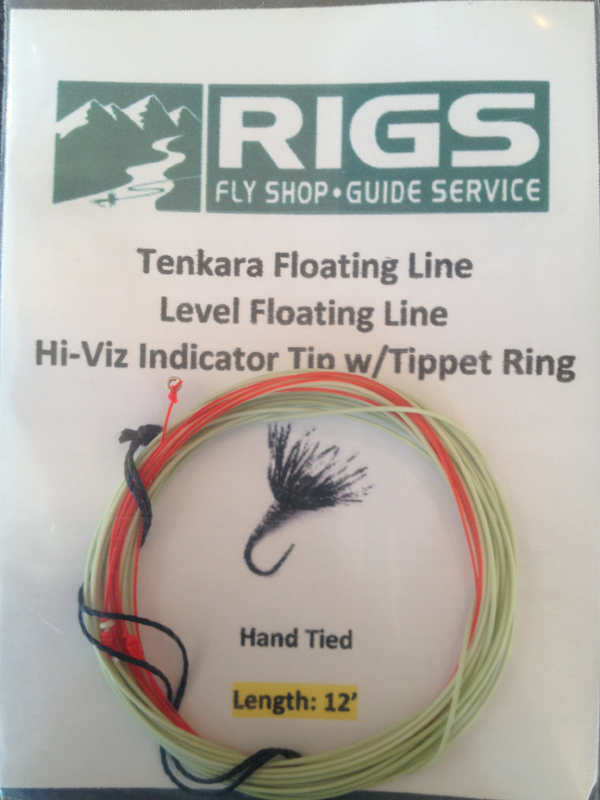
After a year and a half of testing, Tim Patterson and Matt McCannel from Rigs have come up with a real, floating tenkara line. You might ask why that’s so extraordinary when floating fly lines have been around for decades. It’s true that some people have cut up floating fly lines and used them for tenkara. But they were designed to be cast by much shorter, stiffer rods in a totally different application. It’s hard to get just the right line cut up just the right way to perform well and not overpower the comparatively whippy tenkara rod. And, it will be expensive.
You could also try floating running line but most floating running lines sold today are still too thick to be cast well with a tenkara rod. They’re not designed to be cast on their own. They’re designed to be pulled through guides by a shooting head. So that’s not ideal either.
But it appears Tim & Matt have finally cracked the code.
At first glance, this new line looks and feels like a western floating line. And it is. It’s just extremely thin. But using a PVC based line is the key to its great buoyancy. It floats just like any standard WF or DT floating line and is a visible (but not garish) light blue/green color.
At the tip, there is a 2′ section of red Amnesia for strike detection that is tapered in two steps for better turnover. Amenesia was a good choice since it’s nylon and won’t defeat the purpose of having a floating line as would using sinking fluorocarbon. Still, I wonder why a high vis section is needed at all. If you’re fishing a dry fly, you should be watching the fly, not the end of the line. Of course, I’m assuming this line was developed primarily for dry fly fishing (which may not be the case). Perhaps the section of Amnesia is meant to make it more of an all purpose line that just happens to fish dry flies better than sinking lines. At any rate, the large knots in the Amnesia make it highly visible in a range of different lighting conditions so if you do fish subsurface with it, you won’t have any problems knowing when a fish strikes.
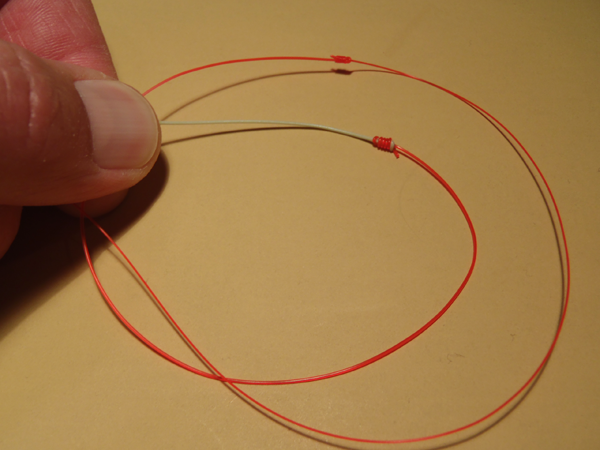
At the end of the Amnesia is a tippet ring. As I’ve stated many times, I’m not a big fan of tippet rings so the first thing I did was cut it off and tie a stopper knot so I could use my slip knot connection. Of course, if you like tippet rings, then you’ll be happy with it out of the box.
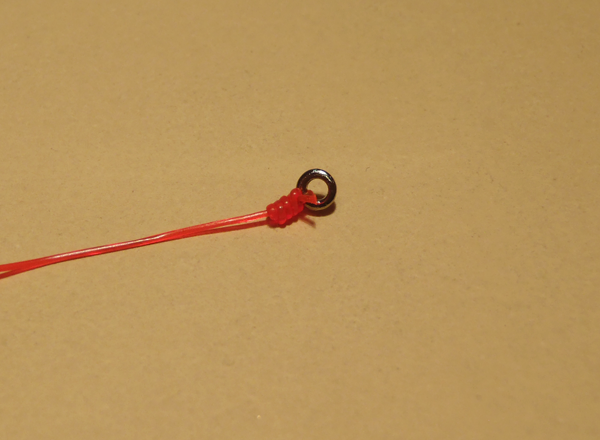
The line is connected to the lilian with a girth hitch and a transition loop–the same connection you find on most furled tenkara lines. This has always been my favorite method for connecting line and I’m glad that’s the one they incorporated.
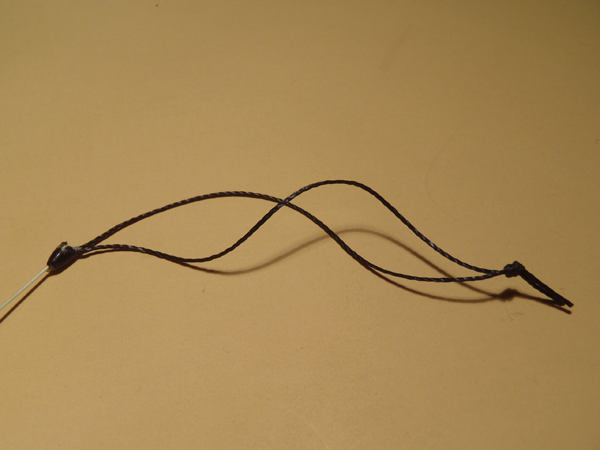
Overall, the performance of this line is spectacular. It’s unlike any other tenkara line I’ve cast. Turnover is excellent even in the wind, yet it can make very delicate presentations of dry flies when you need it. You can really feel the different components working together in harmony to deliver a good cast. It’s hard to describe–you really have to feel it.
One question that came up for me during testing was about maintenance. If it’s made of “regular” fly line, do I have to clean it like “regular” fly line? According to Matt McCassel, the answer is no. And this was good news for me. I remember spending inordinate amounts of time cleaning and dressing my expensive fly lines. And that was something I was happy to say goodbye to when I started fishing tenkara. If you think about it, a tenkara line isn’t pulled through guides or reeled in so it won’t get a lot of abrasion. And because you don’t strip it in, it won’t be piled up at your feet just waiting to be stamped into the mud and gravel. So it makes sense that you wouldn’t have to clean it like its fatter cousins. Matt said he has been fishing a similar prototype line for 2 years and still hasn’t had to clean it.
To me, the best applications of this line would be dry fly fishing or stillwater fishing, yet it could be used as an all purpose line. It just won’t fish as deep as a fluorocarbon line. So I’d say that if an angler had a combo of this floating line and the Rigs fluorocarbon nymph line I recently reviewed, they’d probably be covered for most any situation they’d likely encounter in tenkara.
The line comes in two lengths, 12 ft. and 15 ft. and is available here.


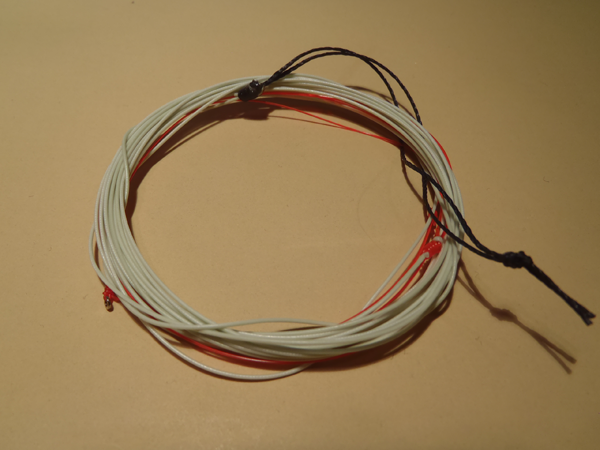






Como siempre,excelente informe,Muchas gracias…..
Hi, Just a few notes about floating Tenkara lines. Floating PVC Tenkara lines are not new. I’ve been using them for about 3 years and several persons I know were doing it before me. The ones I use are made with the mono core floating/shooting line made by Rio because they are much lighter than typical traditional floating fly lines. Cortland made a finer diameter floating/shooting line than Rio but they don’t produce it anymore, which is what I made my first floating Tenkara lines from. They are excellent for all forms of Tenkara fishing but are a little heavier than a fine furled leader, which is still better than anything else for limited “drape” or “bow”, which causes drag. Since I do lots of nymphing with Tenkara tackle, I like the floating lines better due to limited stretch, better visibility, better mending when needed and turnover in the wind than furled or level fluoro lines. They all have their place unless you are of the one line, one fly mindset (I am not).
Hi Larry, excellent background info. Thanks. I know the concept isn’t new. What is new is that for the first time, a good floating tenkara line is commercially available. Until now, it was all DIY. For people like you (I suspect) and me, that’s OK. But some people would rather buy than DIY so I think this line represents a milestone in the tenkara market.
Just out of curiosity, do you know the diameter of the shooting line you used from Rio? I’d like to compare it to the Rigs line.
I was wondering if you have described your stopper knot/slip knot connection for attaching tippet? I couldn’t find it anywhere in your blog, and I would like to see how you do that.
Thanks
Hi Harold,
Here is the link to the video that shows all the tenkara knots you will ever need. It shows the stopper/slip knot connection I use. http://www.tenkarausa.com/blog/?tag=tenkara-knots
I use the knots here, watch the video makes a good example. http://www.oni-tenkara.com/english/tool/linemusubikata.html
One would think that Rigs would offer their lines an option of either the tippet ring or a perfection loop at the business end.
Hi Lynn,
That would be one way of doing it. Actually, I’d rather see them just leave it open ended and let people tie their own preference into the end. I don’t like the loop either. I like stopper knots so I would pretty much revamp any line with a stopper anyway.
As a predominantly dry fly fisher, this new line has some appeal. As we know, Yvon Chounard has been “tenkara” fishing for decades with a floating PVC line. The one thing that concerns me, however, about this new line is the possibility of drag, especially on freestone streams with multiple, conflicting currents. That has been the beauty of flurocarbon tenkara lines, the ability to hold one’s fly in place under such conditions. In any case, another weapon in our tenkara armamentarium.
Jason, What level line do you think this most comapares to in weight #2,#3,#4 or heavier?
Hi Alan, do you mean in how it casts or in diameter?
Jason I would be interested in knowing how it compares in diameter. If someone was going to try to experiment with making their own which size floating line should they try first #2,#3 or #4.
I used a Mike-Rite for the diameters.
My scale is good to 0.01 gram, but only one 12 foot section of “floating” and one 15 foot section of #4.5 were weighed, so the numbers have to be treated as “close” versus “spec”.
The Rigs is about .023″ in diameter.
A TUSA #4.5 is about .014″ in diameter.
The Rigs runs about .087 grams per foot.
The TUSA #4.5 runs about .056 grams per foot.
Hi jason, finally, because your “advise”, I ordered both lines to Tim, also ordered a fuji keepers, I never use the fuji, what is your experience.
regards.
Vasco
Hi Vasco, actually, I was the person who first introduced the idea of using EZ Keepers for tenkara. Here is my original post:
https://www.tenkaratalk.com/2010/05/tenkara-line-management/
Since then, I have come to prefer line spools instead. Here is a post I wrote on the Tenkara USA blog explaining why:
http://www.tenkarausa.com/blog/?p=2819
Many people like my idea to use EZ Keepers and that’s OK. But after a fair amount of experience in the field, I just prefer spools. Everyone has their own preference. I took a while to discover mine.
I have been fishing Rigs Floating T-line for a year now and really like it for fishing dry flies in the wind on lakes. Although it can also do a good job of being an all around line, it is easier to hold up off of the water than a wet Kevlar TUSA Traditional line is in my experience, I believe level and hand-tied tapered fluorocarbon lines are still better for running water situation fishing. And I believe the HiVis tip section is partially there as a visual aid for nymph fishermen using the on the water floating fly line technique.
I have been fishing Rigs Floating T-line for a year now and really like it for fishing dry flies in the wind on lakes. Although it can also do a good job of being an all around line, it is easier to hold up off of the water than a wet Kevlar TUSA Traditional line is in my experience, I believe level and hand-tied tapered fluorocarbon lines are still better for running water situation fishing. And I believe the HiVis tip section is partially there as a visual aid for nymph fishermen using the on the water floating fly line technique.
Rigs Floating T-line will work with the EZ-Keepers but will require stretching, just like the FC lines, to get the coil set out of it if you keep the line on the EZ-Keepers for any length of time. I would not recommend long term EZ-Keeper storage of this line on EZ-Keepers.
Thanks for the tip Karl! I don’t use EZ keepers anymore but for those who do, can you tell us if they leave kinks in the floating line?
The answer is yes, the EZ-Keepers put kinks in Rigs Floating
line just as they do with any FC line. It is the worst when it
is cold in the mornings at altitude. Stretching the line will
get most of the kinks/coil set out of the line. Casting,
catching fish, and as things warm up, will remove any residual line memory from the line better than it does with FC lines.
Here is a link to a review I did of Rigs Floating Tenkara Fly Line on a 4-day high lake backpacking fishing trip:
http://www.flyanglersonline.com/bb/showthread.php?47676-Rigs-Floating-Tenkara-Fly-Line-Does-A-Great-Job-On-A-4-Day-Backpack-Fishing-Trip
It is ski season for me right now, but I am sure looking forward
to next summer’s high lake angling and stream fishing with
T-gear. Tight lines all, Karl.
thanks for posting this. the poor fish in the slow-moving creek down the way are in for some exciting times.
I was fortunate enough to get to test this today on still waters versus bass and bluegill. I had been struggling with a level line and then a furled thread line in the wind. Then a new fishing buddy let me borrow his set up with the floating line. I was suddenly making “perfect” casts into the wind and getting the fly to set down where I wanted it.
I’m sold and will order one shortly.
Hi. Are you supposed the entire length as is? Or is meant to be cut to size?
I don’t see any reason why you couldn’t cut it to your desired length.